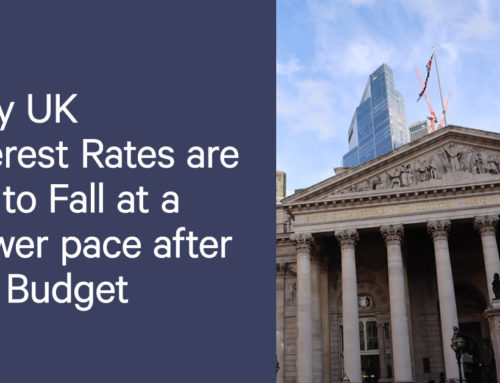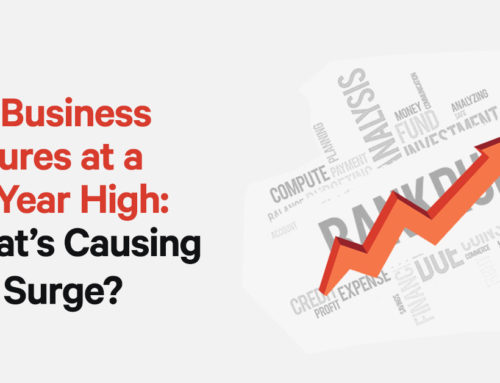There is no getting away from the fact that it has been a difficult few years for businesses big and small. The pandemic, withdrawal of support and then the rise of energy prices have all been a perfect storm of trouble. As a result, it’s hardly a surprise that there are so many organisations that find themselves in too awkward a financial position to keep going. Insolvency rates are at an all-time high, and people are starting to wonder whether this is something that might continue moving forward. This article is going to talk in more detail about the insolvency rate forecast as 2023 gets underway.
The Wider Economy
The UK economy is struggling at the moment. It is expected to hit a recession in the second half of 2023. There was a 0.2% quarterly drop in Q3 and then a 0.3% drop in Q4. The GDP is expected to continue to decline throughout 2023, as a 1.6% contraction is expected for the entire year as a whole. This means that for a lot of UK businesses, it’s likely going to get worse before it gets any better.
Thanks to the cost of living crisis and the continued issues surrounding energy throughout the UK, consumers are expected to spend a lot less as the year moves on, which will likely be a driving factor towards the recession. The most recent data published states that UK inflation on the consumer price index has risen by over 10% in the past year. This is five times higher than the bank of England’s target.
Of course, the bank of England has acted in an effort to slow the price growth by raising interest rates. They did this eight times in 2022, which lifted the bank rate to the point that it currently stands at 3.5%. It will be effective in helping to limit inflation, but simultaneously it will also push up borrowing costs for both businesses and households. Businesses are finding it harder to borrow for investment, and houses with mortgages face higher costs too.
All of this is a massive factor when it comes to insolvency rates. Businesses are under a hard time due to inflation, consumers not buying as much and loans being harder to come by. On top of that, support from the pandemic was withdrawn too, which only adds fuel to the fire.
The Rise in Interest Rates
The latest data published shows that there has been a 32% rise in the number of insolvencies in the UK compared to a year earlier. Some of the most prominent industries which saw these insolvencies were wholesale and retail food services. This is expected as fewer people are visiting the establishments at the same time that it’s costing more to run the establishment as a whole. There has been a massive decline in demand, making businesses struggle to stay open due to a lack of funds.
UK Insolvency Rate Forecast
As the recession continues throughout 2023, insolvency numbers will likely continue to rise. The difficult business environment will make it so that organisations everywhere struggle to survive. The number of insolvencies in Q1 of 2023 is expected to hit about 6300. The trajectory will continue moving into Q2 with around 6400 and it will then likely fall a little bit towards the back end of the year.
Even though numbers will improve towards the end of the year, they’re still expected to reach about 6000, which is far above average. For instance, from 2010 to 2019, the average number of insolvencies during this period stood at 4600, so it’s a steep increase. In line with these insolvencies, the number of administrations will also increase.
Moving even further into 2024, at this current rate, average insolvencies are expected to stand at about 5900 per quarter, even though the recession will end in 2023. The level of insolvencies after such financial hardship remains high for the following years and does not merely end following the back end of the recession. This is because, during periods of recession, businesses try their hardest to stay open and implement a number of different strategies. For some companies these work and for others they don’t, those that don’t contribute to the increased numbers.
What Can You Do to Help Your Business?
If you find yourself undergoing financial difficulties, then there are several ways that you can help your business. These include:
- Outsource Services
If you intend on expanding your business, consider outsourcing as opposed to hiring. Hiring new staff members can cost a considerable amount of money as you need to pay for onboarding, numerous training sessions and different benefits. When you outsource, you still get work done but only pay for what you need doing. This makes it easy to scale up and down depending on your business’s financial position.
- Try Save On Utilities
Given that so much of the current financial hardship is brought on thanks to the rising energy bills, you should see if you can save money on utilities. This means ensuring you turn things off when not using them, changing your supplier and looking into buying a smart meter so you can monitor how much you spend and factor it into your business’s budget.
- Seek Financial Advice
There are a number of firms out there that are going to be able to provide advice through these difficult times. For instance, at Leading UK, we have a team of experts on hand who are able to advise businesses undergoing financial difficulty. There are a number of options available to you, and we will take our time to lay them out so you can decide on a way forward. If you have any questions or require any further information about what we at Leading UK are able to do, then do not hesitate to get in touch.






